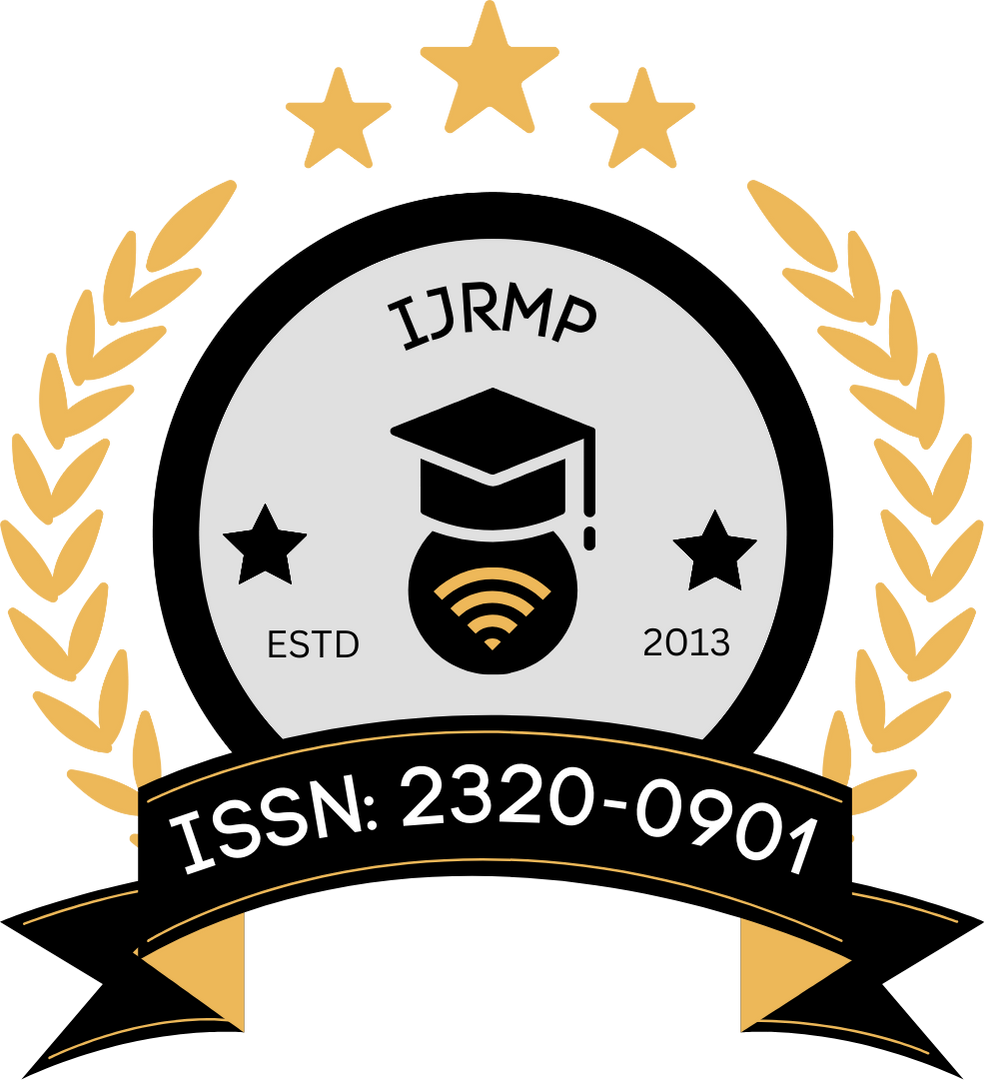![]()
Published Paper: PDF
DOI: https://doi.org/10.63345/ijrmp.v14.i7.4
Prof. (Dr.) Punit Goel
Maharaja Agrasen Himalayan Garhwal University
Uttarakhand, India
Abstract
Digital Twin Technology (DTT) creates a dynamic, data-driven virtual replica of physical systems. In hospital pharmacies—where medication safety, inventory control, dispensing speed, and interdisciplinary coordination are mission-critical—digital twins can simulate end-to-end workflows, detect bottlenecks, test redesigns, and support real-time decision making without disrupting patient care. This manuscript examines how DTT can be harnessed to model hospital pharmacy operations, integrate clinical research data, and evaluate intervention scenarios ranging from automated dispensing cabinets (ADCs) to AI-driven demand forecasting. Drawing on systems engineering, operations research, and clinical informatics perspectives, we demonstrate a conceptual and methodological framework for constructing and validating a pharmacy digital twin. A mixed-methods clinical research design combining retrospective transactional data, time–motion observations, and stakeholder interviews feeds the computational model. Discrete-event simulation (DES), agent-based modeling (ABM), and hybrid system dynamics (SD) elements are woven together in the twin to represent patient flows, medication compounding, verification steps, and clinical pharmacist interventions at the bedside. Results from simulated experiments—such as reallocating staff, altering batch compounding schedules, or implementing RFID-based tracking—show statistically significant reductions in turnaround time (TAT), near-miss errors, and stock-outs while optimizing cost per dispensed dose. The study concludes that DTT is not merely a visualization tool but a continuous learning platform that supports quality improvement, resilience engineering, and regulatory compliance. Scope and limitations include data quality issues, organizational readiness, cybersecurity risks, and generalizability across diverse hospital sizes. We propose future research on federated twins across multi-hospital networks, predictive maintenance of pharmacy automation, and integration with digital therapeutics.
Keywords
Digital twin; hospital pharmacy; workflow simulation; discrete-event simulation; agent-based modeling; clinical research; medication safety; inventory optimization; turnaround time; operational excellence
References
- https://www.intel.com/content/www/us/en/programmable/quartushelp/17.0/jka1465597193315.image
- https://www.researchgate.net/publication/374230627/figure/fig2/AS:11431281193184894@1695859988020/Flowchart-for-optimizing-the-turnaround-time-TAT-in-delayed-critical-result.jpg
- Grieves, M., & Vickers, J. (2017). Digital twin: Mitigating unpredictable, undesirable emergent behavior in complex systems. In F.-J. Kahlen, S. Flumerfelt, & A. Alves (Eds.), Transdisciplinary perspectives on complex systems (pp. 85–113). Springer.
- Tao, F., Zhang, H., Liu, A., & Nee, A. Y. C. (2019). Digital twin in industry: State-of-the-art. Mechanical Systems and Signal Processing, 107, 1–34. https://doi.org/10.1016/j.ymssp.2018.11.017
- Jones, D., Snider, C., Nassehi, A., Yon, J., & Hicks, B. (2020). Characterising the digital twin: A systematic literature review. Computers in Industry, 130, 103–128. https://doi.org/10.1016/j.compind.2020.103282
- Fuller, A., Fan, Z., Day, C., & Barlow, C. (2020). Digital twin: Enabling technologies, challenges and open research. Computers in Industry, 123, 103–226. https://doi.org/10.1016/j.compind.2020.103226
- Kritzinger, W., Karner, M., Traar, G., Henjes, J., & Sihn, W. (2018). Digital twin in manufacturing: A categorical literature review and classification. Procedia CIRP, 67, 101–107. https://doi.org/10.1016/j.procir.2017.12.050
- Negri, E., Fumagalli, L., & Macchi, M. (2017). A review of the roles of digital twin in CPS-based production systems. IFAC-PapersOnLine, 50(1), 4728–4733. https://doi.org/10.1016/j.ifacol.2017.08.764
- Rasheed, A., San, O., & Kvamsdal, T. (2020). Digital twin: Values, challenges and enablers from a modeling perspective. Archives of Computational Methods in Engineering, 27, 1343–1360. https://doi.org/10.1007/s11831-019-09386-4
- Pedersen, C. A., Schneider, P. J., & Scheckelhoff, D. J. (2016). ASHP national survey of pharmacy practice in hospital settings: Dispensing and administration—2015. American Journal of Health-System Pharmacy, 73(13), 427–445. https://doi.org/10.2146/ajhp150755
- Institute for Safe Medication Practices. (2022). ISMP guidelines for safe medication use in hospitals (2nd ed.). ISMP.
- Bonnabry, P., Cingria, L., Sadeghipour, F., Ing, H., Fonzo-Christe, C., & Pfister, R. E. (2005). Use of a systematic risk analysis method to improve safety in the production of pediatric parenteral nutrition solutions. Quality and Safety in Health Care, 14(2), 93–98. https://doi.org/10.1136/qshc.2003.009035
- Garcia, R., Foster, S., & Jackson, K. (2012). Evaluating the impact of automated dispensing cabinets on medication safety and workflow. American Journal of Health-System Pharmacy, 69(22), 2003–2010. https://doi.org/10.2146/ajhp110619
- Jun, J. B., Jacobson, S. H., & Swisher, J. R. (1999). Application of discrete-event simulation in health care clinics: A survey. Journal of the Operational Research Society, 50(2), 109–123. https://doi.org/10.1057/palgrave.jors.2600669
- Brailsford, S. C., Desai, S. M., & Viana, J. (2019). Towards the holy grail: Combining system dynamics and discrete-event simulation in healthcare. Journal of the Operational Research Society, 70(9), 1–13. https://doi.org/10.1080/01605682.2018.1437068
- Macal, C. M., & North, M. J. (2010). Tutorial on agent-based modelling and simulation. Journal of Simulation, 4(3), 151–162. https://doi.org/10.1057/jos.2010.3
- Chahal, P., Eldabi, T., & Patel, B. (2013). Simulation modelling in healthcare: Reviewing legacies and investigating futures. Journal of Enterprise Information Management, 26(1/2), 107–130. https://doi.org/10.1108/17410391311289547
- Parlikad, A. K., McFarlane, D., Fleisch, E., & Xu, X. (2022). Digital twins for healthcare: State of the art and future research directions. IEEE Access, 10, 25394–25410. https://doi.org/10.1109/ACCESS.2022.3148975
- Bruun, H. P. L., Mortensen, N. H., & Harlou, U. (2022). Digital twins in healthcare: A scoping review. Health Informatics Journal, 28(2), 1–18. https://doi.org/10.1177/14604582221087315
- Badri, S., Boulos, M. N. K., & Jones, R. B. (2021). Digital twins in healthcare: An architectural blueprint. International Journal of Medical Informatics, 155, 104–576. https://doi.org/10.1016/j.ijmedinf.2021.104576
- Hopp, W. J., & Spearman, M. L. (2011). Factory physics (3rd ed.). Waveland Press.
- Law, A. M. (2015). Simulation modeling and analysis (5th ed.). McGraw-Hill.
